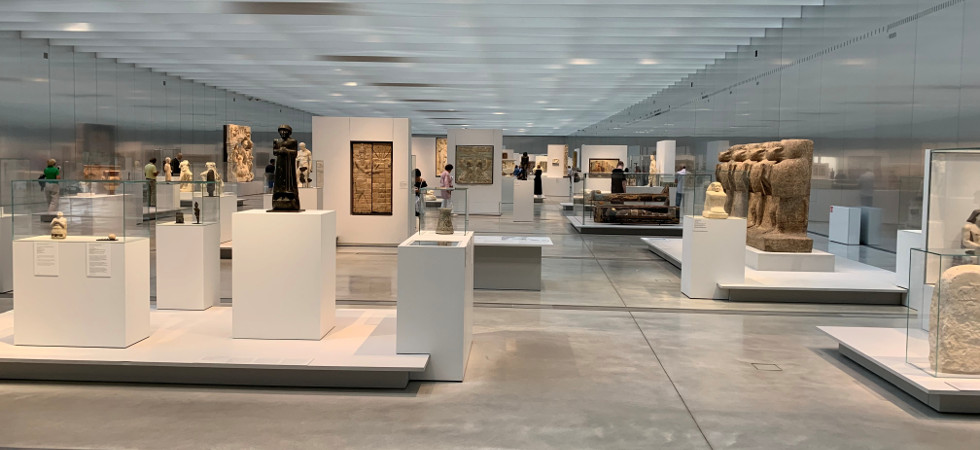Travel writer Irene Caswell visits Lens in Northern France and discovers art, fine food and history combine to make the perfect weekend break.
Northern France’s mining history
The Arras region of Pas-De-Calais is a former mining area and a UNESCO World Heritage Site. Originally a fortification from the 11th century Norman invasions, from the mid 19th century the Lens was an important industrial centre.
The town was largely destroyed in the First World War and half of the population perished. The community also suffered multiple mining catastrophes. The last mine in Lens closed in 1986, leading to a sharp rise in unemployment way above the French national average for the ‘Lensois’.
In recent years, the area has undergone regeneration with the building of a new triumvirate. The Musée Louvre-Lens opened in December 2012, as well as an eponymous new hotel and a restaurant by Michelin 4-star Chef Marc Meurin. Lens is a historically interesting and attractive Le Weekend destination and I spent a few days exploring the district which has much to offer.
Musée Louvre-Lens

Today the town is home to the magnificent Louvre-Lens art museum, a satellite Louvre museum. The site was chosen in 2003 with the aim of reversing the depressed community’s fortune, as well as making objects of art and culture accessible to people outside of Paris.
The project was inspired in part by the economic success of Bilbao following the opening of the Guggenheim Museum in 1997. The Musée Louvre-Lens was designed by Japanese architects SANAA and New York studio Imrey Culbet.
The bold polished aluminium building exterior offers a hazy reflection of the sky and the landscape, reminiscent of the Guggenheim Bilbao. A central building flanked by two wings however mimics the Paris Louvre. The central structure features glass walls and affords views from the inside out. The entire effect is quite stunning.
5,000 Years of History and Art
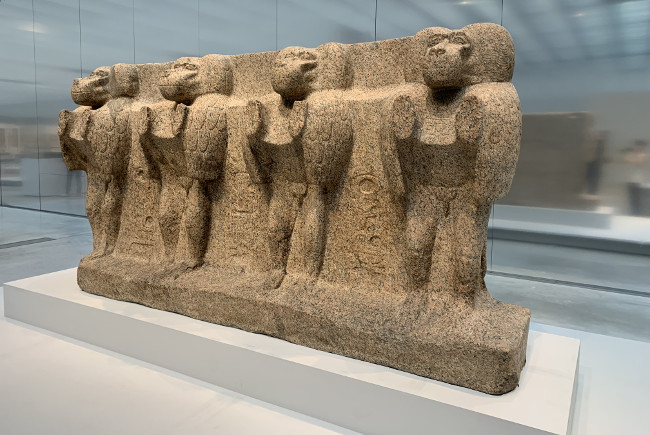
Musée Louvre-Lens is built on a 49-acre mining site that closed in the 1960s and altogether provides a staggering 300,000 sq ft of exhibition space. Le Galerie du Temps – Gallery of Time – at 32,000sq.ft is a dramatic space full of light that offers a time-traveller’s view of art.
It houses approximately 200 items laid out informally regardless of style or country of origin, and chronologically from 3,500 BC to the mid-19th century, each era blending into the next. The eye is drawn from item to item across the vast open space. I felt like an excited child in a sweet shop, and it is a unique and fresh way to view art.
Le Galerie du Temps is curated by Jean-Luc Martinez, president and director of the Musée du Louvre, and Vincent Pomarède, director of culture and outreach programming at the Musée du Louvre.
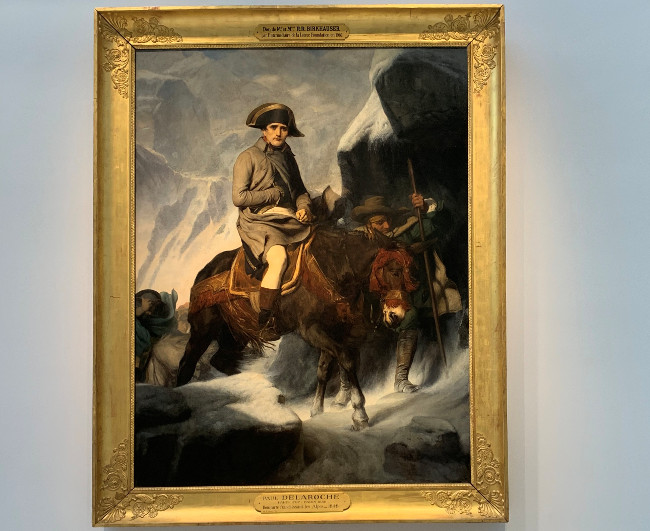
Objects on display are on loan from the collections of the Paris Louvre. The Lens museum is funded by the Nord-Pas-de-Calais but retains close institutional links with the Louvre. It also acts as a storage – and quarantine – area and restoration facility. Glass walls allow visitors to view work in the underground area through glass viewing walls display.
The items on display are not fixed. On the anniversary of the museum not only is the collection partially renewed but the layout is also rearranged, no small undertaking for such a large space but it must be a curator’s dream gallery.
Additional galleries include the Pavillon de Verre which exhibits works from neighbouring museums and the Exhibitions Temporaires for transitory items that show for only three months. The collection includes major works such as Jean de Cambrai’s Two Mourners from a funeral cortege that was on the tomb of the Duc de Berry, Jacques Saly’s Cupid Testing one of His Arrows and more.
There is also an auditorium, bookstore, a museum boutique and a café which includes tiny Ch’Terrill au marron cakes amongst the patisserie.
Hôtel Louvre-Lens
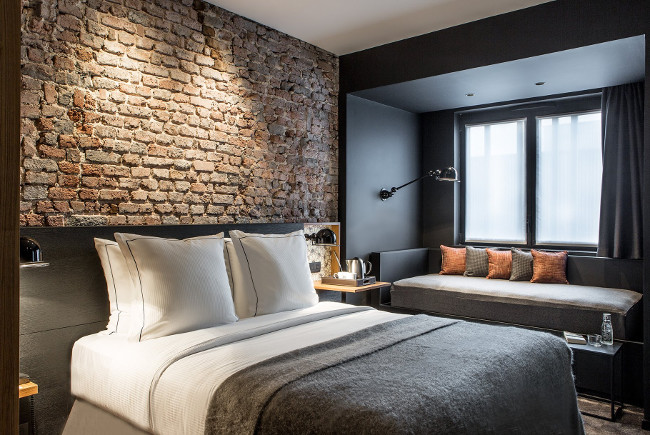
The 4-star Hôtel Louvre-Lens is situated opposite the museum entrance. The elegant hotel has been created from mining row-houses, now linked by glass extensions, and retains a sense of authenticity of place and time. Design is by architect Claire Duthoit of Maes Architects in Lille and interior designer Guillaume Da Silva. The stylish interior is contemporary and in muted colours.
Natural materials used include enormous ceiling lights of coloured glass, exposed brick walls, natural wood and linens. The stylish room I stayed in overlooked the garden. A roomy walk-in shower nook with a deluge shower featured beautiful monochrome tiled flooring. A white rectangular stone basin with shiny chrome taps, fluffy robes and towels made for a perfect bathroom with plenty of natural light.
Le Galibot brasserie

The lively hotel bar – which proudly supports the RC Lens football club – is integral to Le Galibot brasserie run by Chef Fabian Pascal. I enjoyed a fresh and sophisticated starter of Gazpacho with mozzarella and tomatoes. The team created a dish especially for me on the spot of chunky white fish fillet (it was getting late and the name escaped me, or simply got lost in translation) with wild asparagus and petit pois, which was fresh and sweet. The seasonal menu features local specialities and might include dishes such as Fried snail spring rolls and leeks dressed with Pyrenees pine vinegar.
Hôtel Louvre-Lens services include: 52 rooms (two rooms are accessible for people with reduced mobility); and fitness and wellbeing facilities of a small gym and a sauna with a great view over the museum next door. The concierge service is able to arrange tickets to the Musée Louvre-Lens. Outside there is an attractive Japanese-style garden and a terrace for dining and drinks.
Michelin Star Chef
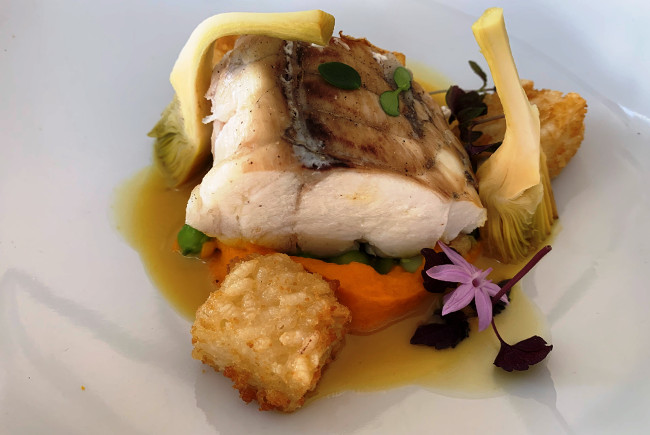
The third aspect of the Louvre-Lens offering is L’Atelier Marc Meurin located within the museum parc du Louvre-Lens. The architectural design is a transparent glass bubble to merge the inside and outdoors. We visited during the recent heatwave and white blinds ensured a cool interior temperature.
The circular space is decorated in the same colours as the museum in greys and blues. Marc Meurin was born in Lens and has continued to develop his career in his home region and now holds two Michelin Stars. An amuse-bouche, a pretty chilled beetroot gazpacho in a tiny cup, was very welcome on a hot day.
The plump moist prawns nestling under a thin filo pastry, La Raviole Ouverte de Gambas, was followed by a main of La Noix de Lotte, Petits Pois, Artichaut, Croquette de Risotto. Both were exquisitely presented and utterly delectable. Sadly, as we had a train to catch there was no time for dessert. Fluffy and fruity homemade marshmallows, albeit startlingly coloured, compensated for the disappointment.
Outdoor activities
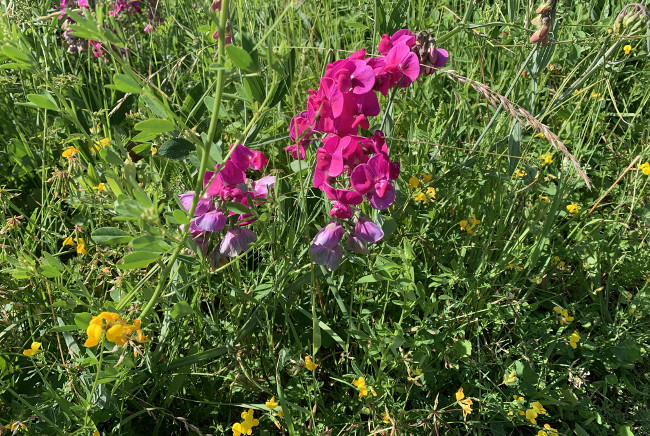
Still in the UNESCO mining site, around 3km from Lens, the 11/19 pit at Loos-en-Gohelle offers a further glimpse into the district’s mining history. The area is a vast open expanse where nature is slowly reclaiming Les Terrils, or shale heaps, also known as Northern France’s pyramids. The landscape, with an abundance of wildflowers and wildlife, make it ideal for walking and cycling.
We climbed to a level between two Terrils and were rewarded with panoramic views and a welcome breeze. A former mine building at ground level has been converted into Fabrique Théâtrale, a community theatre, and you can book tickets for productions and events from the local tourist office.
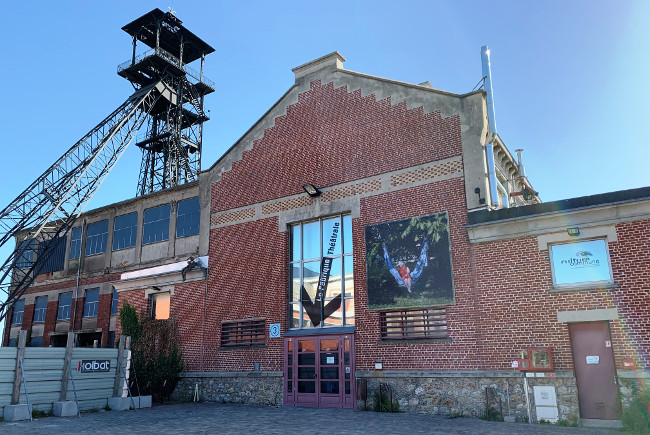
The Musée Louvre-Lens, Hôtel Louvre-Lens and L’Atelier Marc Meurin are integral to the mining loction. The liberal use of glass and metal in the architecture both reflects the natural landscape and eliminates structural boundaries.
The location on arrival does feel a little incongruous. It is though a fine example of how to reclaim and re-imagine an industrial wasteland and something we could learn from in the UK. For the discerning sustainability-savvy traveller it has all the right ingredients for the Bilbao-effect to work in Lens. The area offers a rich cultural history and is a must-visit location. Book your ticket now.
FACTBOX
Musée Louvre-Lens
Admission to the Gallery du Temps and the Glass Pavilion is free. The Louvre Lens Museum is open every day except Tuesday, 10am to 6pm, and 1 January, 1 May and 25 December. Check the website for details of current and upcoming exhibitions.
Hôtel Louvre-Lens
The hotel is a member of the Hôtels & Demeures Esprit de France Collection. Room rates from 115€
L’Atelier Marc Meurin
Open from 12h-14h & 19h-21h every day except Tuesday all day and Sunday evening.
Getting there
The Eurostar to Lille takes just 90 minutes from St Pancras London. Lens is connected to the TGV network, with high speed trains to Paris.
The Pas-De-Calais
The area is a great place to begin planning your visit to Northern France.












